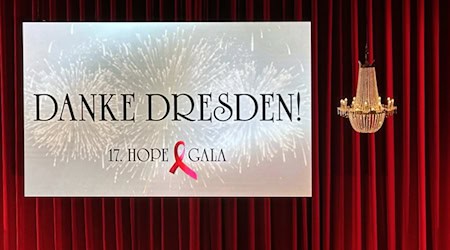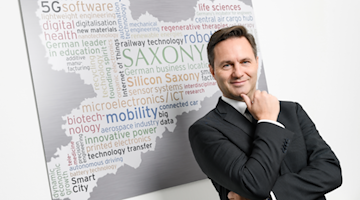In a world where precision and reliability make the difference, ADZ NAGANO GmbH is at the forefront of sensor technology. From Ottendorf-Okrilla in Saxony, the company drives innovation and quality. In an interview with Hannes Georgi, Managing Director and Head of Research & Development, we explore ADZ NAGANO's corporate mission, the connection to the Saxon scientific landscape and how customized solutions drive international business. Find out how customer-specific requirements and Saxony's dynamism as a business location are shaping the company into a globally active hidden champion.
1. Can you give us a brief overview of ADZ NAGANO GmbH and explain your company mission?
As ADZ NAGANO, we produced pressure and temperature sensors for a wide range of applications in Dresden at the standard location Grenzstraße until 2005 and since then in Ottendorf-Okrilla. These range from less complex industrial applications to safety-critical brakes in the railroad sector and use in aircraft. This covers a very broad spectrum of applications and industrial sectors. In all these areas, our customers are happy to rely on customized and specially tailored solutions. You can obtain these from us from a quantity of 1.
Customization goes so far that we also adapt the shipping packaging to the needs and requirements of our customers.
With a team of 115 men and women, we produce around 600,000 sensors a year in a 3-shift system. The team also includes sales and product development in line with the requirement profiles that our customers send us. These range from a three-liner to a thirty-liner. In other words, we can deal with inquiries that need to be answered very quickly through to projects with a development period of several years. From this, we can quickly deduce that we need a relatively high proportion of research and development in the company in order to process these inquiries with the appropriate quality.
2. How does ADZ NAGANO benefit from the scientific and economic resources in Saxony?
In essence, because we are in close contact with the TUDD and the local Fraunhofer Institutes and always find competent contacts there. Ultimately, projects or collaborations are also created here through short official channels in order to test and evaluate new ideas or technologies.
3. to what extent does Saxony stand out as a business location for your company, especially in an international context?
The international relationships and experience of the industry in an international environment absolutely stand out for the standard location of Saxony and Dresden in particular. The complexity of the companies and their structures are particularly well suited for us to make our customer-specific products economically successful. The local SMEs understand this type of production and customized developments and projects. Here, we can draw on the full potential for both small and medium-sized series production. Thanks to this structure of companies and company managers, niches and special applications can always be served on the international market. In this respect, not only we at ADZ but also many other small and medium-sized companies are on the move worldwide as so-called hidden champions and are characterized by a high level of innovation and adaptability.
4. Your products are known for their precision and quality. What makes your sensor technology so special compared to conventional solutions?
In the last 10 - 15 years, manufacturing processes and the specific product design have converged between a large number of manufacturers. However, there are sometimes significant differences in the details of the products and their manufacturing methods and processes. These can often only be recognized through a deeper analysis and evaluation of the products. Nowadays, the finished product from different manufacturers is on a very equal level in the area of standard solutions, so that the product itself is sometimes no longer decisive for success.
Adapted solutions, a sometimes unconventional approach to solving the task in the development phase and intensive communication are much more decisive factors. At ADZ, for example, we try not to offer our customers the products that are currently available, but which perhaps only fulfill 80% of the customer's tasks. Although this might be sufficient for some customers, our aim is to offer the customer a 120% solution. This may allow future problems to be solved, or they may not arise in the first place. It is often the case that our customers' specifications / requirement specifications are incomplete with regard to special properties. Together with the customer, we then develop a solution to close and address these gaps in the best possible way and with a view to the future. Ideally, this solution is then based on our standard components and our standardized production processes.
There are therefore very few "conventional" solutions for us.
5. How does your company deal with the challenges of the sensor technology sector, particularly in terms of quality and customer expectations?
We also try to understand what specific requirements exist and how we can best address them through intensive discussions with our customers. Here, too, we sometimes have to find unconventional solutions and coordinate them with the relevant partners. This requires a great deal of effort for the exchange with this customer, but ultimately we can also offer a customized solution in each case. It doesn't matter whether we make payment terms flexible, organize price adjustments variably or introduce certain additional tests on the products as part of production.
6. Independence and flexibility are important aspects in your sector. How does ADZ NAGANO define these concepts in its business strategy?
In terms of our strategic approach, we try to be in close contact with our suppliers, both in terms of personnel decisions and on the procurement side. What our customers expect from us, we also have to address to our suppliers. Without their commitment and understanding, our ability to act is limited. In terms of independence from our suppliers, we can only achieve this in very limited areas. Addressing this and ultimately increasing our vertical integration is part of our strategic planning for the coming years. Significant investments are required here at the standard location. These must also be coordinated and adjusted time and again with our business partners and shareholders.
In addition to personnel, product flexibility also requires production technologies and processes that allow for this flexibility. A compromise must be made here between productivity and variability. This compromise is ultimately reflected in the costs for individual products.
The strategy for the coming years will also be geared towards developing customer-specific solutions and being able to produce these in a scalable manner. Each 5-piece sample order can theoretically result in a project with 50 thousand parts per year.

Sensors, transmitters, electrical switches for measuring pressure and temperature
7. How important are custom-made products in your product portfolio and how do your customers benefit from them?
The challenge is that, in principle, over 90% of our products are adapted to customer-specific requirements, meaning that there are no standard products in our portfolio. This means that, in principle, every customer receives a custom-made product tailored to their needs. The importance of this is therefore very high, as customization is essential for our customers.
Due to our production structure and product design, it is possible to offer every customer a solution for their specific requirements. This means that customers benefit from customized products for their tasks. Our customers do not have to settle for the first best, but can rely on receiving a solution from us that is robust, that has already proven itself many thousands of times in product design and that will still be around in 5 or 10 years' time.
8. Could you go into more detail about your obsolescence management offering and how it adapts to the needs of different customer groups?
As our customer spectrum ranges from "we need a sensor" to "we need exactly THIS sensor" with different quality requirements, it is also a very complex environment for the management of components and the question of how we can still manufacture product A and B in 5, 10 or 20 years' time.
For some customers, it is only important that the product works. A new one preferably better than one from 5 or 10 years ago. It doesn't matter what components are used. We don't have a problem here, as we always have a successor for the basic functionality.
In contrast, customers basically demand that a product from today can still be manufactured in exactly the same way in 20 years' time. Depending on the nature of this requirement, we will already stock the material for this time and discuss and agree the pre-financing etc. with the customer. This also explicitly includes the storage of these components. If the case is somewhat simpler, we have the option of requalification within the framework of the contracts in the event that individual components are no longer available. It is then often contractually regulated how these costs and expenses are to be settled. Here, too, we try to create a solution that is coordinated with the customer and suitable for both sides.
9. What safety and quality standards apply to the development and manufacture of your sensor technology products?
For the vast majority of the products we develop and manufacture, we are guided by ISO 9001. For some of the products, our customers require the quality standards of the automotive industry, which means we have to comply with IATF 16949. Other customer projects require guidelines for explosion protection or the application scenarios for the products require that the corresponding IEC 60079 directive is observed and complied with.
In the area of aviation projects, reference is made to ISO9100 and quite a few of our international customers also bring their own quality rules and specifications to the project.
10. Your company has an extensive network. To what extent does this support your positioning in the international market?
Thanks to our national and international partners, we have very broad access to a large number of application areas and markets. This allows us to position ourselves in these regions and fields of application and to adapt and customize our products for the specific requirements in each case. This also strengthens acceptance and perception there. As we often act as an OEM manufacturer in these markets and our products are not necessarily recognizable as ADZ products, we rely on the expertise of our partners.
Through the sales networks maintained by our partners and customers, we also gain access to new fields of application and, in some cases, new projects. We are then often in direct contact and exchange with the end customers to minimize possible misunderstandings and delays.
11. How do you see the future of Saxony as a business location in the sensor technology sector?
The establishment of various companies from the semiconductor industry in the standard location will inevitably strengthen the opportunities and future viability of the industry. However, it is difficult to predict whether this will specifically affect the sensor technology sector or whether there will be a trend, for example, towards semiconductor technology and related industries. The sensor technology that we support as ADZ and the sensor technology sector that is required for semiconductor technology and the electronics industry are only congruent to a small extent. However, we see the opportunities to participate in technological developments and to develop added value for ADZ as positive and constructive. It is clear that there will be a further settlement of so-called high technology in the Dresden area.
12 In conclusion: What future projects or partnerships can we expect from ADZ NAGANO in the near future?
As a rule, ADZ's partnerships are not presented to the public in an effective or obvious way. Once again, this is due to the interests of our customers and partners. However, it can and must be emphasized again and again that we maintain a very close relationship with our co-founder NAGANO KEIKI Ltd. in Japan and that there are always points of contact, sometimes for larger investments or measures at the standard location. Cultural exchange is particularly important to us here.
We will publish further projects involving product developments or development partnerships in due course.
We will also continue to acquire and work on new projects in the areas mentioned. Our involvement in the LRT or the Hydrogen SME Initiative should act as a catalyst for such projects and partnerships.
_
If you would also like to take the opportunity to present your company and your visions in an exclusive interview, please get in touch - we look forward to sharing your story.
➡️ Contact: Thomas Wolf, thomas.wolf@diesachsen.com










